This document provides an overview of satellite communication link design. It discusses basic transmission theory including the link equation and factors that affect received power such as EIRP, path loss, and antenna gains. It also covers system noise temperature and the G/T ratio. The document outlines considerations for designing downlinks and uplinks. It describes how to calculate overall C/N ratio when multiple C/N ratios are present in the link. Finally, it lists the typical steps involved in designing a satellite communication link for a specified C/N requirement.
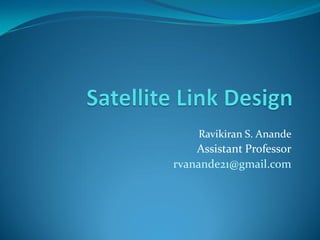



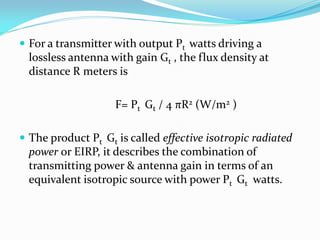
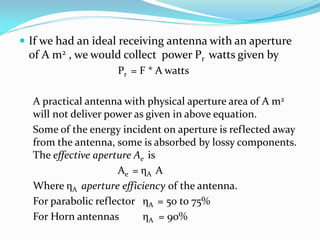
![ Thus the power received by real antenna with effective
aperture area Ae m2 is
Pr = Pt Gt Ae / 4 πR2 (watts)……..(A)
A fundamental relation in antenna theory is gain &
area of an antenna are related by
G = 4π Ae / λ2
Substituting above equation in equation (A) gives
Pr = [Pt Gt Gr/ (4 πR / λ )2 ]watts
This expression is known as link equation & essential
in calculation of power received in any radio link.
The term (4 πR / λ )2 is known as path loss Lp .](https://image.slidesharecdn.com/satellitelinkdesign-180730083054/85/Satellite-link-design-7-320.jpg)
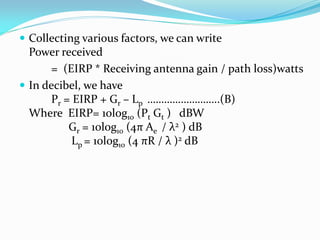



















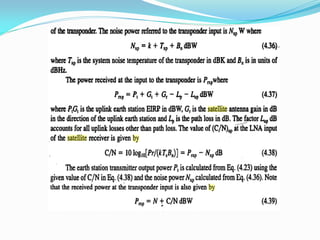

![Design for Specified C/N:
When more than one C/N ratio is present in the link,
we can add the individual C/N ratios reciprocally to
obtain overall C/N ratio denoted as (C/N)o
The overall (C/N)o ratio is
(C/N)o = 1/ [1/(C/N)1 + 1/(C/N)2 +_ _ _ _ _]
This sometimes referred as reciprocal C/N formula.
The C/N values must be linear ratios, not decibel
values.
(C/N)o = C/(N1 + N2 + _ _ _ _ _ _ _ )](https://image.slidesharecdn.com/satellitelinkdesign-180730083054/85/Satellite-link-design-30-320.jpg)



